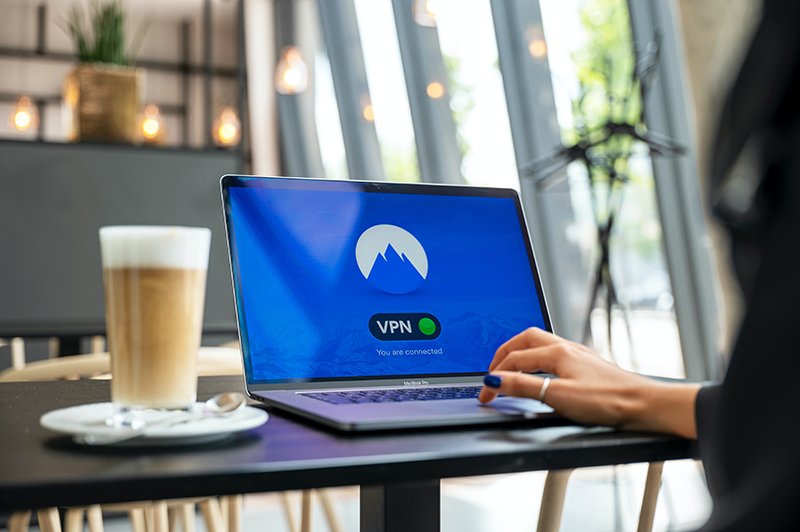Email scams, also known as phishing scams, are designed to trick people into giving away their personal information or money. Phishing scams have become increasingly sophisticated, making them harder to detect. In this article, we will discuss how to spot email scams and protect yourself from falling victim to them. We will also explore the reasons why people create phishing scams and what the bad actors stand to gain from this practice. Here are some initial tips:
Check The Senders “From” Email Address Field First
1. Check the “From” Email Address: One of the easiest ways to spot an email scam is to check the “From” email address. Scammers often use fake email addresses that are similar to legitimate ones. For example, they may use “support@amaz0n.com” instead of “support@amazon.com.” (Hint: The word first Amazon word has a ZERO in place of the letter “o”. Look very carefully. This slight difference can be difficult to spot, but it is essential to check the email address carefully.)
If you are unsure, you can always contact the company directly to verify if the email is genuine or not. But you need to make sure that you are calling a real number. So be very careful when trying to locate a support number. Typically, it is possible to locate a valid phone number in a previous, legitimate email that you received from Amazon. If you are trying to contact a credit card company, those phone numbers are always on the back of your credit cards.
How To Check The “From/Sender’s Email Address
2. How to check the “From” email address: This is probably the most important telltale sign of a fake email, so we would suggest spending time on mastering this portion of advice. So here we go……
If you are using Mac Mail (The envelope icon down at the bottom of your dock on your Apple computer, or the envelope icon on your iPhone or iPad at the bottom), when you open an email, it will show an email address at the top in the “From” field. Normally it will summarize the sender’s email address into a name at the top like “Amazon”, “Apple support”, “Norton Antivirul Renewals” or “Mcafee” for example. But what most people don’t know is that, if you click that name, it will expand to show the full email address from the sender. This is where you can become a true detective.
When you click the sender’s email address, and you see the full address (i.e. the @gmail.com portion for example), this is where you can determine if the email is a scam or not. And here’s how. If you received an email from any of the above-listed email senders, and you click to see their email address, if it does NOT end in “@amazon.com”, “@apple.com”, “@norton.com” or “@mcafee.com”, they are most likely scammers. You will notice that these senders’ email addresses will end in @gmail.com or random @kdjfhfkuue.com (random, made-up extensions) email extensions. And now that you have this information, ask yourself this: “Why would Amazon be sending me an email from a @gmail.com address?”. Hopefully, this will help you to get better at email scams and how to spot them.
Be Wary Of Urgency
3. Phishing scammers often use urgency to make people feel like they need to take immediate action. They may claim that your account has been compromised or that you have won a prize, and you need to act quickly to claim it. However, legitimate companies rarely use such tactics. Therefore, it is important to be cautious of emails that demand immediate action or offer you an unrealistic reward.
Check for Spelling and Grammar Errors
4. Emails from legitimate sources are usually well-written and professional. If an email is filled with spelling and grammar errors, it is likely a phishing scam. Scammers may also use awkward phrasing or strange sentence structure. This can be a sign that the email was not written by a native English speaker. Therefore, always read the email carefully, and if it contains spelling or grammar errors, it is best to delete it.
Don’t Click on Links
4. Emails from legitimate sources are usually well-written and professional. When an email contains numerous spelling and grammar mistakes, it’s often a sign of a phishing scheme. Additionally, if the email features odd phrasing or sentence structure, it may suggest that the sender is not a native English speaker. Therefore, always read the email carefully, and if it contains spelling or grammar errors, it is best to delete it immediately.
Be Aware Of Phishing Scams
5. Phishing scammers often use links to direct people to fake websites or download malicious software. Therefore, it is important not to click on any links unless you are sure they are genuine. You can check the URL by hovering your cursor over the link without clicking on it. If the URL looks suspicious or unfamiliar, it is best to avoid clicking on it. You can always type the URL of the website directly into your browser to ensure you are visiting a genuine website.
Reasons Why People Use and Create Phishing Scams & Email Scams
That’s why it’s important to know all about email scams and how to spot them. Phishing scams have been around since the early days of the internet. But they have become increasingly sophisticated over the years. There are several reasons why people create phishing scams, including:
Financial Gain: One of the main reasons people create phishing scams is to make money. Phishing scammers may ask for your credit card details or bank account information to steal your money. They may also ask you to purchase gift cards or send them money directly. As mentioned, the primary reason why cybercriminals create phishing scams is to make money. They do this by tricking people into giving away their financial information, such as credit card numbers or bank account details. With this information, scammers can steal money from the victim’s accounts or use their credit cards to make unauthorized purchases.
Identity Theft: Phishing scammers may also ask for your personal information, such as your social security number or date of birth. Be cautious with your personal information as it could be used for identity theft and fraudulent account openings. Phishing scammers are often motivated by both financial gain and identity theft. By obtaining personal information such as a social security number or date of birth, they can use this information to open new credit accounts, apply for loans, or even file false tax returns.
Malware Distribution: Some phishing scams may also include links to download malicious software. Once installed, this software can be used to steal your personal information or take control of your computer.
Espionage: In some cases, phishing scams may be created by state-sponsored hackers or criminal organizations for the purpose of espionage. These scammers may target government agencies, corporations, or individuals to steal sensitive information or disrupt operations.
Corporate espionage: Some phishing scams are aimed at stealing sensitive corporate information. Cybercriminals may create fake emails that appear to be from a legitimate company, such as a bank or financial institution. They do this in order to trick employees into giving away confidential information.
Political motives: In some cases, phishing scams may be used for political purposes. Cybercriminals may create fake emails that appear to be from a political party or candidate. They do this in order to spread false information or sway public opinion.
Phishing scams can be challenging to spot
By following these tips, you can protect yourself and your personal information. Always check the “From” email address, be cautious of urgency, check for spelling and grammar errors, and avoid clicking on links. By taking these simple steps, you can protect yourself from phishing scams and avoid falling victim to their malicious intentions. It is important to remain vigilant and aware of the tactics used by phishing scammers and to take steps to protect your personal information and finances.
In addition to the tips discussed in this article, it is also a good idea to keep your MacOS Operating system up to date and to use strong passwords that are not easily guessable. You should also be wary of any unsolicited emails, especially those that ask for personal or financial information.
If you do fall victim to a phishing scam, it is important to act quickly to limit the damage. You should immediately change your passwords and contact your bank or credit card company to report any fraudulent activity. You should also report the scam to the relevant authorities, such as the Federal Trade Commission or the Internet Crime Complaint Center.
By understanding the motivations behind phishing scams, you can better protect yourself from falling victim to them.
In Conclusion Regarding Email Scams & How To Spot Them
Phishing scams are a serious threat to individuals and businesses alike. By learning how to spot these scams and taking steps to protect your personal information and finances, you can reduce your risk of becoming a victim. Always be cautious when opening emails, especially those that ask for personal or financial information. Remember to check the sender’s email address and look for any red flags, such as spelling or grammar mistakes or urgent requests. If you are unsure about the legitimacy of an email, don’t hesitate to contact the sender directly or seek help from an IT professional. With these tips in mind, you can stay safe and secure online.
You can also call Ubermac with more questions, or to schedule an in-person appointment in our Jupiter, FL office for some one-on-one lessons, classes, and instruction at 561-320-4564 to learn more about email scams and how to spot them. Also, feel free to check ou t the other informative articles in our blog.


